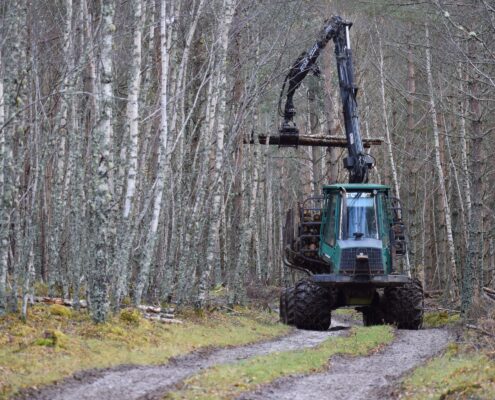 https://greenmarked.it/wp-content/uploads/2023/12/tom-dahm-Tvnfjn4n00I-unsplash-scaled.jpg
1438
2560
Lorenzo Barbieri
https://greenmarked.it/wp-content/uploads/2022/01/LOGO-GREENMARKED-SITO-600x600.png
Lorenzo Barbieri2023-12-08 19:15:292023-12-11 21:23:33The Point of View of AI
https://greenmarked.it/wp-content/uploads/2023/12/tom-dahm-Tvnfjn4n00I-unsplash-scaled.jpg
1438
2560
Lorenzo Barbieri
https://greenmarked.it/wp-content/uploads/2022/01/LOGO-GREENMARKED-SITO-600x600.png
Lorenzo Barbieri2023-12-08 19:15:292023-12-11 21:23:33The Point of View of AIMarch 24, 2023

Building new facilities, such as factories, farms, buildings, and many others, requires several procedures to undergo through. A crucial one is the Environmental Impact Assessment (EIA), which studies the environmental impacts of the facility. It also proposes preventive, protective, and corrective measures for those impacts.
Let us think of an example: to build a coal-burning plant, we have to analyze all the environmental variables affected by the plant, including the effect of the construction and the future activity on the environment nearby, and how to minimize them. The same would go for a wind park. Or would it?
Last January, the Spanish government registered a proposal for renewable energies to be exempt from EIA validation [1], to promote green energy, according to the European parliament’s Renewable Energy Directive (RED) [2]. And this raises several concerns.
When talking about green energy, our mind goes automatically to pictures of windmills, solar panels, or hydroelectric dams, focusing our thoughts only on the amount of greenhouse gases released into the atmosphere. Sometimes, this can fool us, by making us think that no emissions mean no impacts, which is not true. These kinds of facilities require lots of space, affect the surrounding landscape and environment, and need rare metals and delicate components that are extracted in some way. All these requirements can be considered quite impactful.
Another important consideration concerns what is considered Green energy, Indeed, not so long ago the European Commission considered that nuclear and natural gas energy could be labeled as “green”. Would that mean that nuclear plants or gas-burning facilities could also be excluded from environmental surveillance? Does not seem necessary to explain the impacts these facilities have.
However, this does not mean abandoning renewables. We must pursue 100% green energy production actively, just not at any cost.
Even with no emissions, there are impacts to consider and minimize. Macro-projects often have negative impacts and, unless we are talking about economic benefits, they present more downsides than benefits [3]. What could be pursued, more ideally, are for instance self-sufficient buildings.
In 2019, the Spanish government eliminated the so-called “Sun Tax” [4], a charge in the electric bill for those that installed solar panels for self-consumption. Since then, self-consumption in Spain has gone from 0.9 % to 4.5 % [5]. There is still loads of work to do, but working in facilitating people to have their own electric consumption secured, instead of depending on non-renewable energies, or big and extensive facilities, could actually mark a difference.
Our lifestyle depends on energy, this is an unalterable fact at this point.
We can rethink it and change it. Right now, we know that our way of living is based on consuming more than we should, making energy another overexploited resource.
So far, while we talk about promoting green energy, we should also talk about degrowth [6]. It is since 1972 that it has been known that unlimited growth is not possible [7]. As we have increased our consumption of everything, including energy, above the limits of the planet, working on reducing the use of power seems just fair.
The solution to the energy problem is not only to shift from non-renewable sources to full renewables. this is just a good start. The solution is to completely rethink our need for energy. That would have an incredible impact.
Related articles:
References:
[1] Pinar, C. (2023). Ribera levanta la obligación de evaluación de impacto ambiental a grandes proyectos de eólica y fotovoltaica en zonas no protegidas. Retrieved on 10 March 2023, from https://www.20minutos.es/noticia/5088366/0/ribera-levanta-la-obligacion-de-evaluacion-de-impacto-ambiental-a-grandes-proyectos-de-eolica-y-fotovoltaica-en-zonas-no-protegidas/
[2] European Parliament. (2018). Directive (EU) 2018/2001 of the European Parliament and of the Council. Retrieved on 10 March 2023, from https://eur-lex.europa.eu/legal-content/EN/TXT/PDF/?uri=CELEX:32018L2001&from=EN
[3] Díez Manceñido, R. (2023, 5 February). Acelerar la instalación de renovables: ¿acierto o error para el medio ambiente?. Retrieved on 12 March 2023, from https://www.eldebate.com/sociedad/20230205/acelerar-instalacion-renovables-acierto-error_90788.html
[4] Gutiérrez San Blas, M. (2022, 15 September). Qué es el impuesto al sol. Retrieved on 13 March 2023, from https://www.newtral.es/impuesto-al-sol/20220915/
[5] El Periódico (2022, 15 June). La energía solar doméstica se quintuplica desde 2019 por la subida de la luz. Retrieved on 10 March 2023, from https://www.elperiodico.com/es/verde-y-azul/20220605/energia-solar-domestica-quintuplica-subida-13781834
[6] Hickel, J., Kallis, G., Jackson, T., et al (2022, 12 December). Degrowth can work – here’s how science can help. Retrieved on 15 March 2023, from https://www.nature.com/articles/d41586-022-04412-x
[7] Feffer, J. (2023, 23 February). From the unsustainable here to the sustainable there. Retrieved on 13 March 2023, from https://www.fairobserver.com/more/environment/climate-change-news/from-the-unsustainable-here-to-the-sustainable-there/
Cover- and preview image: Windmills on a Spanish field. Free-source photo by Luca Bravo on Unsplash. Freely licensed for commercial use.










